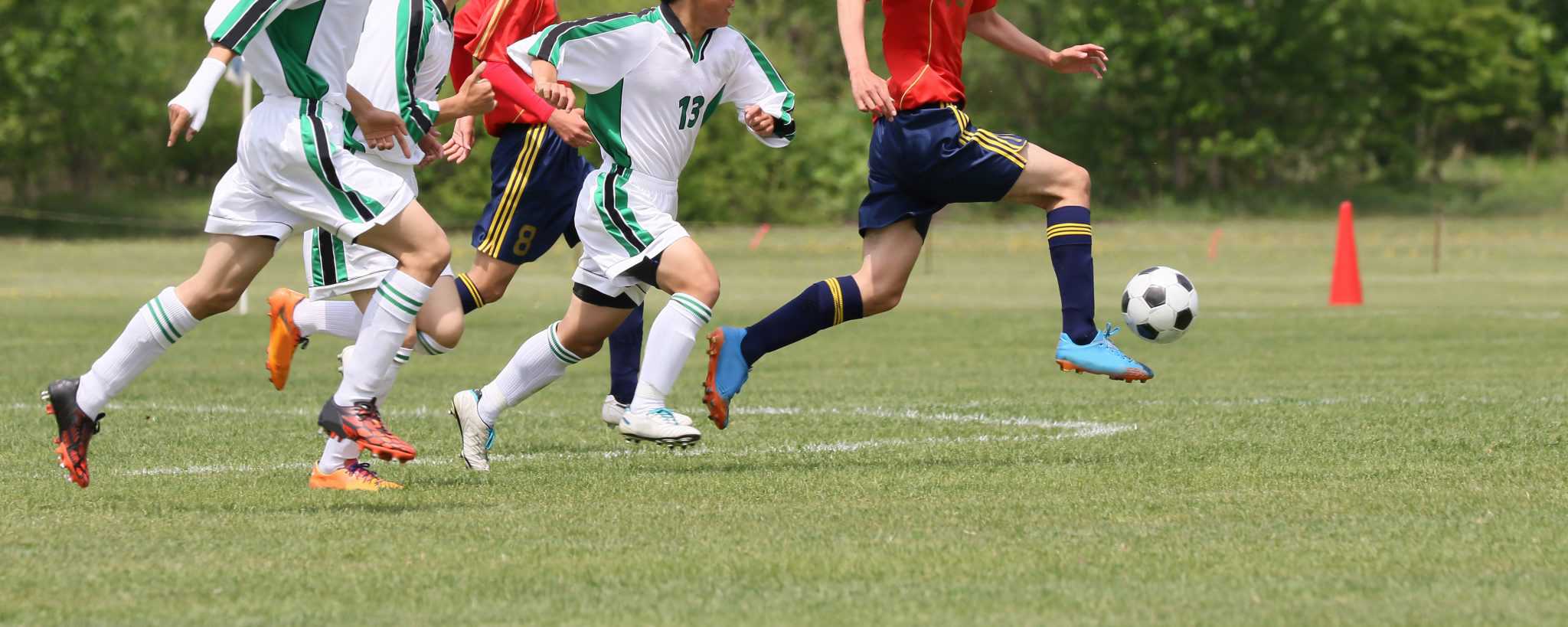Your ability to receive a soccer ball determines your effectiveness as a player.
If you have a poor first touch you will lose the ball before you can do anything.
If you have a great first touch you have more time to look for a pass, dribble, and shoot. Soccer becomes easier.
This article will teach you the 4 different ways to receive a soccer ball and tips to improve your first touch.
4 Ways to Receive the Ball
1. Feet
Use the inside of your foot to control passes. This is the biggest area on your foot so it’s the easiest way to control a soccer ball.
As you develop your ball control ability you can start using different touches to control the ball. For instance, if a through ball is played in front of you, you should control the ball with a lace touch. Using an inside touch will slow you down since you will have to touch the ball then switch to a sole touch.
Sole and outside touches are useful. You can control the ball with the sole and immediately pull the ball back. You can use an outside touch to turn when a defender is on your back.
Having said that, try to control most passes with an inside touch. Use other touches in specific situations as you improve as a player.
Use the inside of your foot to receive passes played through the air that are too low for your thigh or chest. Juggling with the inside touch will help you develop this ability.
2. Chest
Use your chest to control passes played through the air. It’s a big, solid target, so controlling the ball is easy.
To control a soccer ball with your chest, stand firmly like you are shielding a ball, put your arms out, lean back slightly, then touch the ball with the top of your chest.
Don’t let the ball hit your chest. It will bounce off. Instead, hit the ball with your chest and it will fall at your feet.
3. Thigh
Use your thigh when a pass played through the air is too high for your feet and too low for your thigh.
Controlling the ball with your thigh is hard to explain. If you hit the ball with your thigh it will fly in the air but if you let the ball hit your thigh the ball will get away from you.
To control a ball effectively with your thigh take the momentum out of the ball. Tighten your quad and move your leg downward after impact. Imagine your thigh is a pillow.
4. Head
Head the ball to a teammate most of the time.
However, sometimes controlling the ball with your head is the best option, like when no teammates are ahead of you.
There are two ways to control the ball with your head.
If the ball is kicked lightly you can set your feet, lean back slightly, and use your head to touch the ball upwards. Try to take the momentum out of the ball.
If the ball is kicked hard, you have to head the ball downwards and forward then run onto it.
3 Tips on Receiving a Soccer Ball
1. Use Your Arms
Put your arms out before you receive the ball.
Receiving the ball becomes easier because your arms create extra space between you and the defender.
When you use your arms you know where the defender is so you can touch the ball away from him.
Look at our article, How to Use Your Arms in Soccer for more information.
2. Look up
Look up to see who’s around you before you receive the ball.
When you look you have a general understanding of where the defenders are so you can touch the ball away from them.
3. Make your first touch count
Where you touch the ball determines how much time and space you have.
A bad first touch can destroy your team’s momentum and cause you to lose possession.
Think about what you are trying to accomplish before you receive the ball then make your first touch count.
Where you should touch the ball depends on the situation. You may use an outside touch to knock the ball around a defender, an inside touch across your body to set up a shot, or touch the ball forward so you can dribble with pace.
Learn where to touch the ball and what touch to use in every scenario. You will become more effective on the field.

